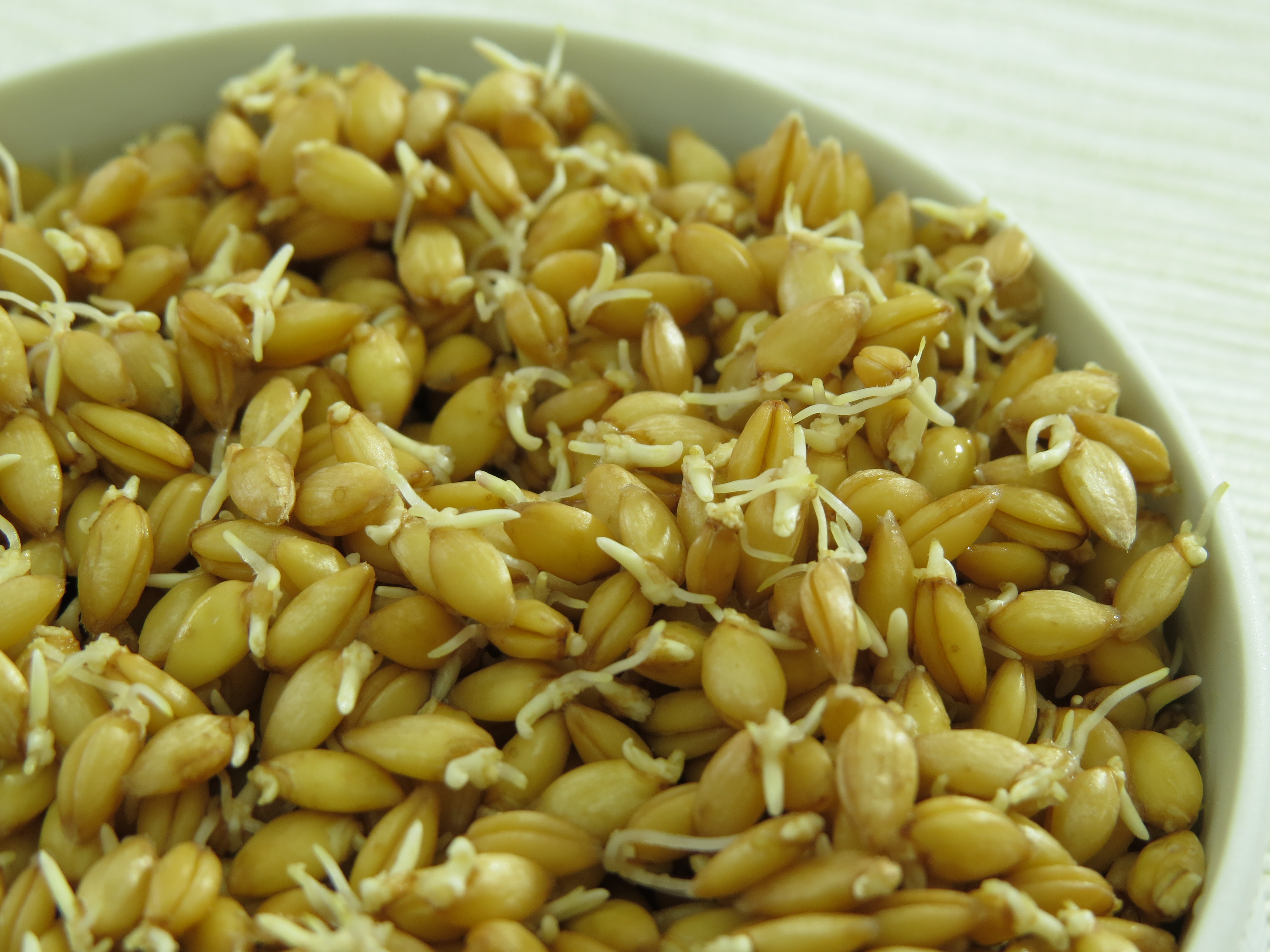A team of scientists from Saskatchewan University and Guelph University in Canada researched multiple alternative ancient types of wheat – einkorn, emmer, kamut and spelt, aiming to evaluate their potential to be classified as “functional food” on the basis of their carotenoid and xanthophyll content (natural pigments). A preliminary study of the content of common yellow pigments shows a big variation amongst ancient types of wheat, and proves that their content is highest in einkorn grains. Chromatographic separation of carotenoids and xanthophylls, and their following qualification by a mass spectrometer, established that lutein is the main type of xanthophyll in the wheat varieties and its spread inside the grain is species-conditioned. The content of lutein varies between 0.93-7.38 mg/kg. The highest content was measured in einkorn, whereas with spelt and conventional wheat the content of lutein is relatively low. In conclusion, scientists express an assumption that einkorn possesses the highest potential of a functional food, a rich source of lutein (1).
Lutein and our health
A number of scientists share the opinion that the intake of lutein has a powerful protective action against the appearance and development of macular eye degeneration (2, 3, 4, 5, 6, 7) and might slow down aging and abrasion of the lens of the eye, as well as prevent the appearance of cataract (8, 9). It is established that lutein is distributed evenly throughout the retina and acts as a filter, protecting the macula from potentially dangerous types of light, that might cause damage. One of the studies shows that 60-year-old people with normal lutein levels in their retina have the visual sensitivity of 20-year-olds (10). Even with a lack of shortage, people who consume foods rich in lutein are exposed to a smaller risk of macular degeneration (11) and cataract (12, 13, 14, 15).
The concept of “functional foods”
In the 21st century health as a definition is not associated with lack of diseases only, but also optimal physical and mental wellbeing. At the same time the science of nutrition is also developing, going beyond studying the food and nutrients necessary for the development, growth and maintenance of bodily functions, by developing the concept of “functional foods” (or “optimal eating”). Seeing that for many years the basics of healthy eating were generally about the elimination of sugar, wheat products, fatty meats, salty foods and an increased consumption of ‘bio’ foods, “functional foods” follow at present-day. The accent has moved from the loss and retention of weight towards a long life in optimal health (16, 17).
The concept of functional foods arises in Japan in the 80s, when health authorities were aiming to prolong people’s lives and were striving for longevity. Their goal was to improve the standard of life and optimize health costs by slowing down the aging process and achieving better physical and mental health (17). Optimal eating is the consumption of functional foods, which increase health and wellbeing, enhance the physical body and the psyche, and reduce the risk of disease. This means that functional foods either improve the functions of some systems in the body, or reduce the risk of diseases such as osteoporosis, cancer, diabetes, heart disease, weight gain, etc. Generally, they improve the functions of the digestive, cardiovascular and immune systems, as well as the growth and development of children. They render favourable influence throughout our entire lives (18).
Functional foods (even though presently there are many informal definitions (16), as well as ‘bio’ foods are viewed by consumers as high quality products with an added value for health. However, there is a principal distinction between the two. Functional foods focus on the healthy features of the product as separate ingredients or functions. Instead of focusing on the effect ‘bio’ foods focus on the sustainability of the production process, combining health, environment, biodiversity and society. Therefore, in the future a fundamental challenge for scientific research in the sphere of ‘bio’ foods will be the development of methods for food evaluation, and in the field of functional foods – the identification and testing of the functionality of food ingredients and informing the consumers. Research on consumer behavior when choosing ‘bio’ and functional foods shows that the decision to buy ‘bio’ foods is emotional, whereas the choice of functional foods is rational (19).
Dictionary:
Carotenoids – Organic pigments, naturally present in plants and some other photosynthetic organisms such as sea weed, some types of mushrooms and other bacteria. There are about 600 known carotenoids, separated into two groups – xanthophylls and carotenes.
Lutein – one of the known natural carotenoids. It is used by organisms as an antioxidant. Except eye disease lutein also prevents cancerous processes, cardiac pathology, type 2 diabetes, etc. It improves the state of blood vessels, prevents atherosclerosis (fatty deposits in the arteries), which is a prerequisite for heart attacks.
Xanthophyll – a polar compound from the group of carotenoids, which contains oxygen as opposed to carotenes. Carotenoids are red, orange and yellow plant pigments, which apply the relevant colours to fruits and vegetables. All fruits and vegetables have a different concentration of carotenoids. Sometimes the colour is ‘under cover’ because of the dominating content of green chlorophyll in plants.
References:
1. E.-S.M. Abdel-Aal (1), J.C.Young (1), I. Rabalski (1), P. Hucl (2), D. Falk (3)- “Carotenoid and xanthophyll composition of selected alternative wheats”- (1) Food Research Program, Agriculture and Agri-Food Canada, Guelph, ON; (2) Crop Development Center, University of Saskatchewan, Saskatoon, SK; (3) Department of Crop Science, University of Guelph, ON, Canada
2. Bernstein PS, Zhao DY, Wintch SW, Ermakov IV, McClane RW, Gellermann W. Resonance Raman measurement of macular carotenoids in normal subjects and in age-related macular degeneration patients. Ophthalmology 2002 Oct;109(10):1780
3. Snellen EL, Verbeek AL, Van Den Hoogen GW, Cruysberg JR, Hoyng CB. Neovascular age-related macular degeneration and its relationship to antioxidant intake. Acta Ophthalmol Scand 2002 Aug;80(4):368-71
4. Wooten BR, Hammond BR. Macular pigment: influences on visual acuity and visibility. Prog Retin Eye Res 2002 Mar;21(2):225-40
5. Shaban H, Richter C. Biol Chem 2002 Mar-Apr;383(3-4):537-45 A2E and blue light in the retina: the paradigm of age-related macular degeneration. Biol Chem 2002 Mar-Apr;383(3-4):537-45
6. Rock CL, Thornquist MD, Neuhouser ML, Kristal AR, Neumark-Sztainer D, Cooper DA, Patterson RE, Cheskin LJ. Diet and lifestyle correlates of lutein in the blood and diet. Nutr 2002 Mar;132(3):525S-530S
7. Mares-Perlman JA, Millen AE, Ficek TL, Hankinson SE. The body of evidence to support a protective role for lutein and zeaxanthin in delaying chronic disease. Overview. J Nutr 2002 Mar;132(3):518S-524S
8. Berendschot TT, Broekmans WM, Klopping-Ketelaars IA, Kardinaal AF, Van Poppel G, Van Norren D. Lens aging in relation to nutritional determinants and possible risk factors for age-related cataract. Arch Ophthalmol 2002 Dec;120(12):1732-7
9. Hammond BR, et al. Preservation of visual sensitivity of older subjects; association with macular pigment density. Inv Ophthalmol 1996;93:54-8
10. Seddon JM, Ajani UA, Sperduto RD, et al. “Dietary carotenoids, vitamins A, C, and E, and advanced age-related macular degeneration.“ JAMA 1994;272:1413-20.
11. Mares-Perlman et al., “Lutein and Zeaxanthin in the Diet and Serum and Their Relation to Age-Related Maculopathy in the Third National Health and Nutrition Examination Survey,” American Journal of Epidemiology, 2001, Vol. 153, No. 5, pgs. 424-432.
12. Brown et al., “A Prospective Study of Carotenoid Intake and Risk of Cataract Extraction in US Men,” American Journal of Clinical Nutrition, 1999, Vol. 70, pgs. 517-524.
13. Lyle et al., “Serum Carotenoids and Tocopherols and Incidence of Age-Related Nuclear Cataract,” American Journal of Clinical Nutrition, 1999, Vol. 69, pgs. 272-277.
14. Hankinson SE, Stampfer MJ, Seddon JM, et al. “Nutrient intake and cataract extraction in women: a prospective study.“ Br Med J 1992;305(6849):335-9.
15. American College of Ophthamology
16. EC/European Research Area/Food, Agriculture& Fisheries & Biotechnology/Studies and Reports/ Functional food, 2010, www. cordis.europa.eu
17. European Food Information Council, www.eufic.org
18. Katan M. /2002/, Functional foods In: Essentials of human nutrition pp. 633-642
19. Johannes Kahl 1*,Aneta Załęcka 2,Angelika Ploeger 1,Susanne Bügel 3, Machteld Huber 4, Functional Food and Organic Food are Competing Rather than Supporting Concepts in Europe, Agriculture 2012, 2, 316-324
20. www.wikipedia.org





 Where to buy
Where to buy